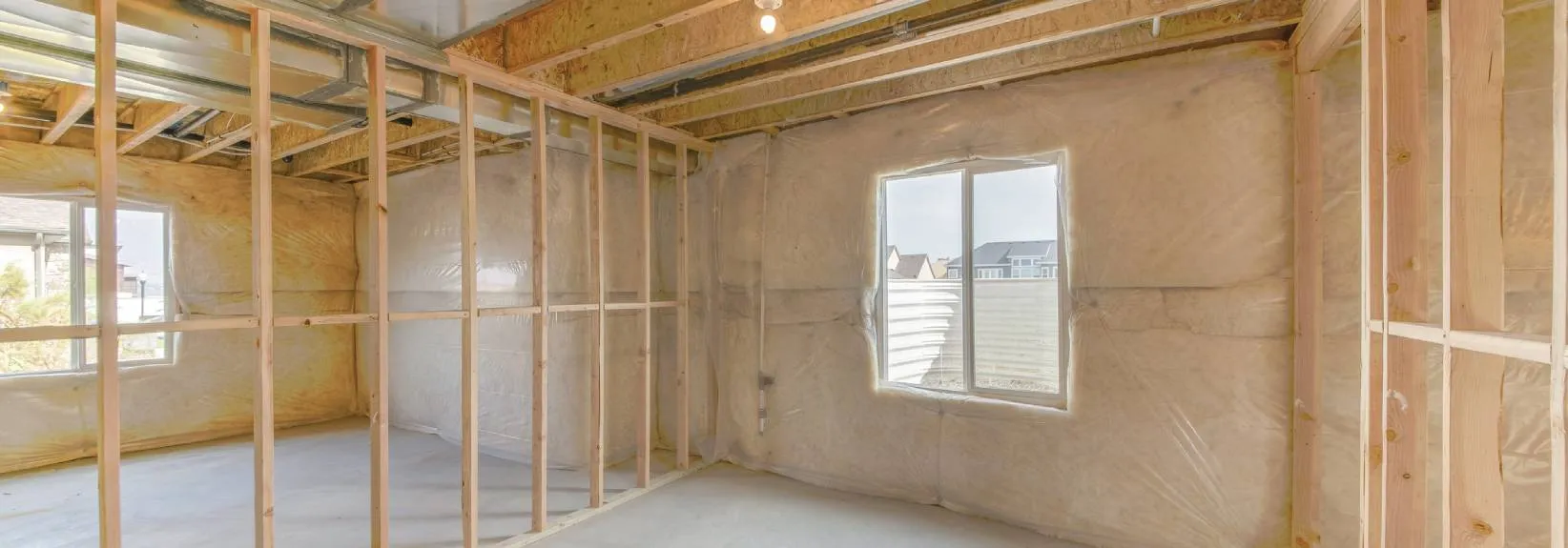Should I Insulate My Basement Ceiling and Walls?
So, you have an unfinished basement. Maybe it’s the place where seasonal decorations and exercise equipment go to be forgotten. Or maybe your basement is an empty space you walk through quickly because it’s chilly in the winter and too humid in the summer. If you’ve been thinking about making your basement more efficient and comfy, you’re probably asking yourself if insulating your basement ceiling and walls is worthwhile. The answer in all probability is yes, but let’s explore why insulation can help.
The Hidden Cost of an Unfinished Basement
If your basement isn’t finished or and has no insulation, you’re not just wasting potential extra living space; your home’s overall efficiency is also taking a hit. Uninsulated basements make your HVAC system work overtime, increasing your energy costs.
You may think the solution is to close up the basement air vents. But if the builder planned ahead, he or she sized the heating and cooling system for the home’s entire square footage, including the basement, so you could finish it one day without upgrading the HVAC equipment. This means if you close the vents, you’ll throw off the return-supply balance and make your furnace or air conditioner to work harder, resulting in the opposite of what you were hoping for.
The nice thing about it is that insulating your basement can make your home more comfy and might even lower your energy bill. It’s a win-win!
The Ins and Outs of Insulating a Basement
A good job involves more than simply installing some insulation on your walls or ceiling and calling it a day. Different kinds of insulation are available, each with advantages and disadvantages to contemplate. You need to also decide where insulation will be the most beneficial—in the walls or on the ceiling.
Insulating the Basement Walls
Many houses benefit from insulated basement walls. It’s like giving your home a nice, warm blanket to huddle under during cold weather, leading to significant energy savings. Insulating your walls also helps soundproof the area if you plan to install a home theater or other potentially noisy features in the basement.
Note: If your basement is susceptible to water leaks or moisture, deal with these issues first. “Insulated” doesn’t mean “weatherproofed,” and wet insulation won’t do its job.
Insulating the Basement Ceiling
This choice as to whether to insulate your basement ceiling isn’t so simple. Yes, insulating the ceiling makes the first floor of your home feel more comfortable, but it can also make your basement chillier. If you intend to finish your basement someday, you might not want to take this road. As a substitute, you could install ductwork and vents, if not already present, to help balance the temperature. On the contrary, if your basement is simply used for storage, go ahead and insulate that ceiling!
Insulating the Basement Floor
You’ve thought about the basement ceiling and walls, but what about the floor? If you reside in a cold-weather climate or you plan to spend a lot of time in your new basement space, insulating the floor is a good move. An insulated subfloor layered with your choice of carpet, wood or composite flooring will make your winter movie nights or family get-togethers much more pleasant.
Types of Basement Insulation
You’ve got multiple choices with regards to insulating your basement. The most common materials include:
- Spray foam: Great for walls and ceilings, spray foam spreads into every nook and cranny and also serves as an effective air barrier.
- Foam boards: This flexible option is suitable for basement walls, ceilings and floors.
- Fiberglass batting: This frequently used insulation is great for filling the space between joists.
Basement Insulation R-Values
The R-value of an insulation material reflects its heat flow resistance. The higher the R-value, the better the insulation. While local building codes establish the minimum R-value recommended for your region, go higher if you can for the greatest efficiency. Here are some general guidelines:
- An R-value of R-15 to R-19 is recommended for basement walls in most climates.
- An R-value of R-30 to R-60 is advisable for basement ceilings if you intend to insulate between an unfinished basement and the living space above.
Other Tips for a Warm and Cozy Basement
Aside from insulating, you can do numerous other things to keep your home and basement cozy:
- Buy a smart thermostat
- Seal the windows and doors
- Hang insulating curtains
- Lay down area rugs
- Install radiant floor heating
- Add a dehumidifier
Choose Service Experts Heating & Air Conditioning for Your Insulation Needs
Whether you want to boost your home’s insulation or install other comfort-enhancing accessories, choose Service Experts Heating & Air Conditioning to get the job done right. We offer top quality, know-how and peace of mind, with 24/7 availability and a one-year 100% satisfaction guarantee. If you’re ready to take the next step in home comfort in Calgary, contact Service Experts Heating & Air Conditioning to request the services you need. Call 403-279-5760 today to learn how we can help!
